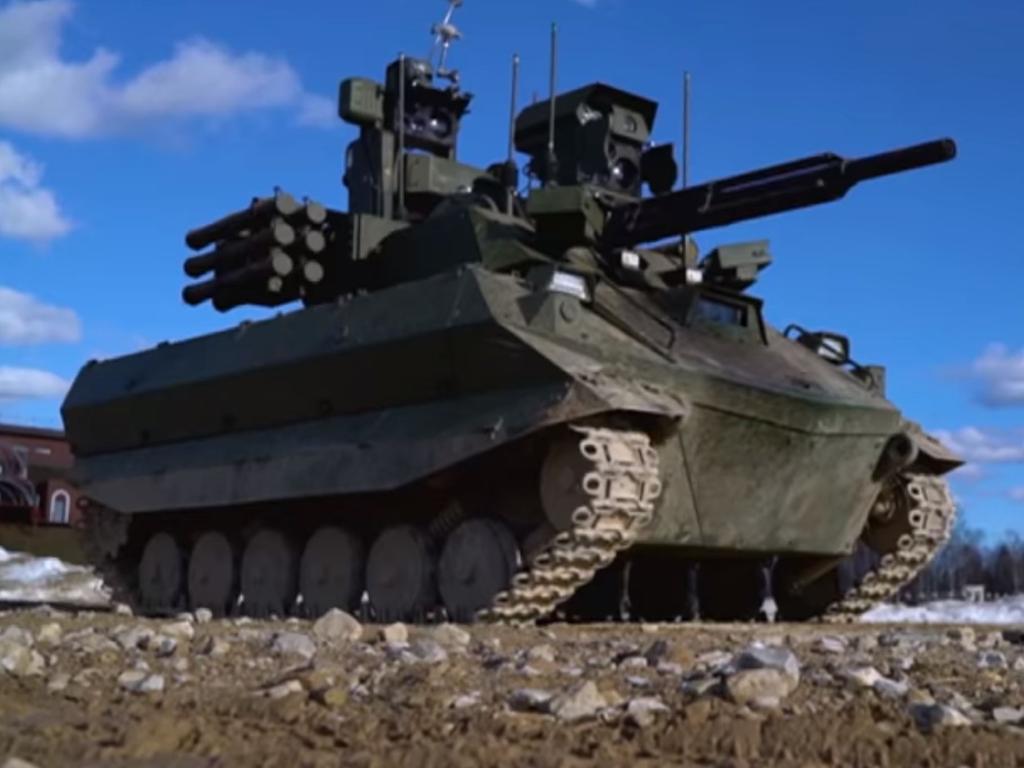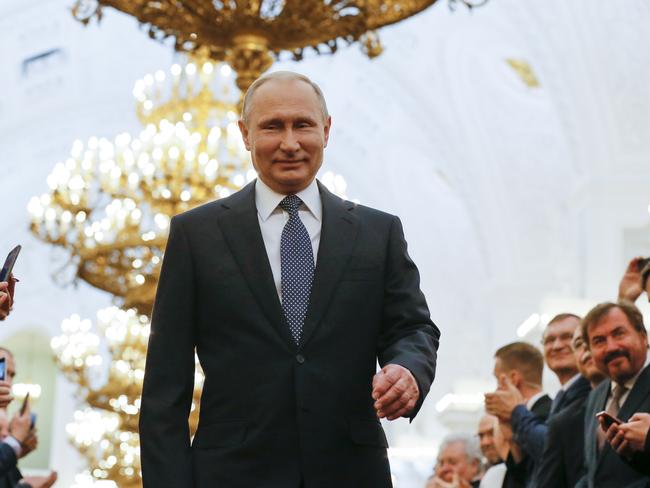Russia’s new killer robot tank the Uran-9 gets pride of place in Vladimir Putin’s victory parade
VLADIMIR Putin will be rolling out his latest and greatest weapons for his Victory Day parade tomorrow. All eyes will be on a new robotic tank bristling with weapons.

RUSSIA’s new Uran-9 is not just a tank. It’s a drone.
And it’s armed to the teeth.
It's small. It’s fast.
And this is because no space or equipment is needed to support a human crew.
It’s taking pride of place during President Vladimir Putin’s Victory Day parade tomorrow — a revived Soviet-era celebration of victory over Nazi Germany.
Russian media is claiming the Uran-9 has already demonstrated its worth fighting in Syria. Its minehunting cousin, the Uran-6, has also been active there.
But it’s the Uran-9 that is attracting all the attention.
It’s a jack of all trades.
And it’s just one of a swathe of deadly new weapons President Putin has been presenting to his public.

It’s optimised to destroy other armoured vehicles. For that purpose, it carries a rapid-firing 30mm cannon capable of firing about 400 rounds per minute.
Much of the rest of its armament appears to be capable of being configured according to need.
It can carry an array of anti-tank missiles. These can reach out some 4km before blasting its warhead into an enemy vehicle with a claimed 90 per cent accuracy rate.

RELATED: What we know about Russia’s new stealth fighter, the Su-57
But the Uran-9 can also carry several small surface-to-air missiles. These would make it difficult for aircraft of helicopters to approach within 3km.
Then there is a machinegun and a set of grenade launchers intended to take-on dug-in opposing troops.
While the tracked and armoured vehicle is reportedly partially autonomous (it can sense and lock-on to targets by itself), it is not fully robotic.
It is a drone.
Remote commanders sit safely in their own armoured vehicles some 3km away, monitoring its real-time feeds to steer it across terrain and prioritise targets.
The Uran-6 mine clearance vehicle is likewise remote controlled. Russian media has shown footage of the drone clearing paths through minefields in Syria.
News of the Uran-9 project first emerged in 2015.
Design specifications called for a reconnaissance and fire support vehicle, intended to operate on the front line amid the thickest of fighting. But it was also intended to take on enemy vehicles much bigger and heavily protected than itself.




